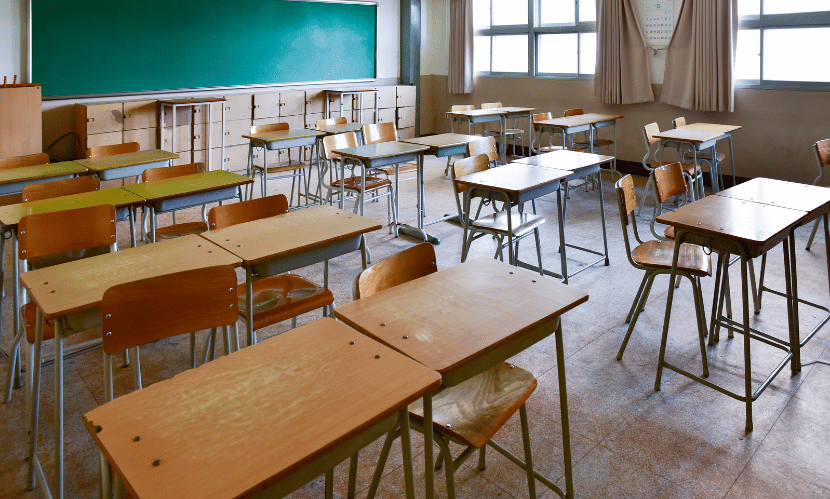
Global School Furniture Market Outlook
According to Expert Market Research, the global school furniture market was valued at USD 5.91 billion in 2024. Driven by evolving educational methodologies, increased emphasis on student comfort, and the rising demand for ergonomic and modular furniture, the market is projected to grow at a CAGR of 7.10% during the forecast period of 2025 to 2034, reaching a market size of approximately USD 11.73 billion by 2034.
Modern education systems are undergoing a significant transformation. Schools around the world are transitioning from traditional classroom settings to interactive and flexible learning environments. This transformation is increasing the demand for dynamic and multifunctional school furniture that supports collaborative, inclusive, and technology-integrated education. Both public and private institutions are investing in innovative designs to ensure better posture, productivity, and health for students of all age groups.
Understanding the School Furniture Industry
The school furniture industry plays a pivotal role in shaping classroom experiences and enhancing learning outcomes. It includes a wide range of products such as desks, chairs, tables, bookshelves, storage units, teacher podiums, laboratory furniture, and library furnishings.
Ergonomics has become a central theme in school furniture design. Research has shown that poorly designed furniture can negatively impact concentration, physical health, and academic performance. As a result, institutions are now focusing on adjustable, space-saving, and student-friendly furniture solutions to create adaptable and engaging learning spaces.
School Furniture Market Size and Share Analysis
In 2024, the global school furniture market saw significant contributions from North America, Europe, and the Asia-Pacific region. North America, led by the United States and Canada, dominates the market due to high education budgets, advanced infrastructure, and emphasis on student wellness.
Asia-Pacific is witnessing rapid growth due to expanding school infrastructure, rising student enrollments, and increased government investments in education. Countries like India, China, Indonesia, and Vietnam are undergoing educational reforms, which are resulting in large-scale furniture procurement for newly constructed and upgraded schools.
Europe also holds a substantial market share, with a strong focus on sustainable furniture, energy-efficient designs, and safe materials in school environments.
Request a Free Sample Report With Table of Contents: Click Here
Key Market Trends
Adoption of Flexible and Modular Classroom Furniture
Educational institutions are moving towards flexible classroom layouts that support different teaching formats such as group discussions, independent study, and project-based learning. Modular desks and chairs that can be rearranged easily are gaining popularity.
Flexible furniture helps in creating multi-functional classrooms that can be adapted for lectures, workshops, digital sessions, and collaborative learning, depending on the need.
Focus on Ergonomics and Student Health
The increasing prevalence of back pain and posture-related issues among children has emphasized the need for ergonomic furniture in schools. Adjustable desks and chairs, lumbar support, and height-compatible furniture are now standard requirements in most new classrooms.
Proper ergonomic design supports spinal alignment and reduces physical strain, thereby promoting better focus and comfort for students during long school hours.
Integration of Technology in Classroom Furniture
The rising use of smartboards, tablets, and e-learning tools has led to an increased demand for furniture that accommodates technology. Charging ports, cable management systems, and digital device holders are being incorporated into desks and study units.
Tech-integrated furniture enables hybrid learning environments, where students can seamlessly transition between traditional and digital learning modes.
Sustainable and Eco-Friendly Materials
As schools become more environmentally conscious, the demand for furniture made from recycled or sustainable materials has increased. Wood sourced from certified forests, non-toxic finishes, and recyclable metals and plastics are being used widely.
Sustainable furniture not only reduces the carbon footprint of educational institutions but also promotes environmental awareness among students.
Market Segmentation
By Product Type
Desks and Chairs
Storage Units
Lab and Library Furniture
Benches
Others
Desks and chairs form the core of school furniture demand due to their presence in every classroom and across all grade levels. Lab and library furniture are increasingly being customized to suit the academic curriculum and learning formats.
By Material
Wood
Metal
Plastic
Mixed Material
Wood remains a popular choice for its durability and aesthetic appeal. However, plastic and metal furniture are gaining traction due to lower costs, lighter weight, and easier maintenance.
By Application
Classroom
Library
Laboratories
Hostels
Canteens
Others
Classroom furniture holds the highest market share, followed by library and laboratory applications. Hostel and canteen furniture are also expanding due to growing student residential populations and full-day schooling formats.
By Region
North America
Europe
Asia-Pacific
Latin America
Middle East and Africa
Asia-Pacific is the fastest-growing region, whereas North America and Europe continue to lead in terms of technological innovation, design quality, and regulatory compliance.
Drivers of Growth
Increasing Government Expenditure on Education
Governments around the world are prioritizing education as a key development agenda. Massive investments in educational infrastructure, especially in emerging economies, are driving the demand for school furniture.
Public-private partnerships and donor-funded projects are supporting the upgrade of existing classrooms and the construction of new schools.
Rising Demand for Customized and Grade-Specific Furniture
Furniture designed for specific age groups is gaining demand. Schools are looking for child-sized chairs, height-adjustable desks, and tailored seating arrangements for primary, secondary, and high school students.
This trend is encouraging manufacturers to innovate and offer differentiated product lines that address varying student needs.
Growth in Private and International Schools
The number of private schools and international education institutions is increasing globally. These schools focus heavily on aesthetics, comfort, and technology-enabled classrooms, thus creating a higher demand for premium school furniture.
International curricula often emphasize collaborative and inclusive learning environments, further contributing to market expansion.
Challenges in the Market
High Cost of Quality and Ergonomic Furniture
Premium ergonomic and tech-enabled furniture tends to be expensive, making it difficult for budget-constrained public schools, particularly in developing nations, to make large-scale purchases.
Logistical and Supply Chain Issues
Transportation and installation of large furniture orders pose logistical challenges. Delays in procurement and poor handling can lead to product damage and financial losses for educational institutions.
Durability and Maintenance Concerns
School furniture is subject to daily wear and tear. Ensuring durability while keeping the design student-friendly and cost-effective is a significant challenge for manufacturers.
Opportunities in the School Furniture Market
Digital Learning and Hybrid Classrooms
The rise of blended learning and smart classrooms offers huge potential for furniture tailored to digital education. From computer desks to e-learning stations, the need for technology-compatible furniture is rising.
Export Potential for Modular and Smart Furniture
Manufacturers in countries like China, India, and Turkey have opportunities to export low-cost modular furniture to schools in Africa, Latin America, and Southeast Asia.
Collaborations Between Furniture Makers and EdTech Companies
Strategic partnerships can result in the development of furniture that complements smart learning platforms. This creates added value and differentiation in a competitive market.
School Furniture Market Forecast 2025–2034
The global school furniture market is expected to grow from USD 5.91 billion in 2024 to USD 11.73 billion by 2034. The growth will be driven by the modernization of classrooms, increased government spending, rising enrollment rates, and the widespread adoption of educational technology.
Innovative, ergonomic, and student-centered designs will shape the future of school furniture. Companies that focus on customization, eco-friendly materials, and technology integration are likely to maintain a strong position in the evolving global market.
Frequently Asked Questions (FAQs)
What is the current value of the global school furniture market?
The global school furniture market was valued at USD 5.91 billion in 2024 and is projected to grow at a CAGR of 7.10% during 2025–2034.
Why is ergonomic furniture important in schools?
Ergonomic furniture helps improve students’ posture, reduces fatigue, and enhances concentration, which leads to better academic performance and overall health.
Which materials are commonly used in school furniture?
The most common materials include wood, metal, and plastic. Wood offers durability and aesthetics, while plastic and metal are cost-effective and lightweight.
How is technology influencing school furniture design?
Technology integration in furniture includes features like charging ports, tablet holders, and smart desks, enabling blended and digital learning environments.
Which regions are seeing the fastest growth in the school furniture market?
Asia-Pacific is witnessing the fastest growth due to rising student populations, new school constructions, and government-led education reforms.
Media Contact:
Company Name: Claight Corporation
Email: sales@expertmarketresearch.com
Toll Free Number: +1-415-325-5166 | +44-702-402-5790
Address: 30 North Gould Street, Sheridan, WY 82801, USA
Website: https://www.expermarketresearch.com










Write a comment ...